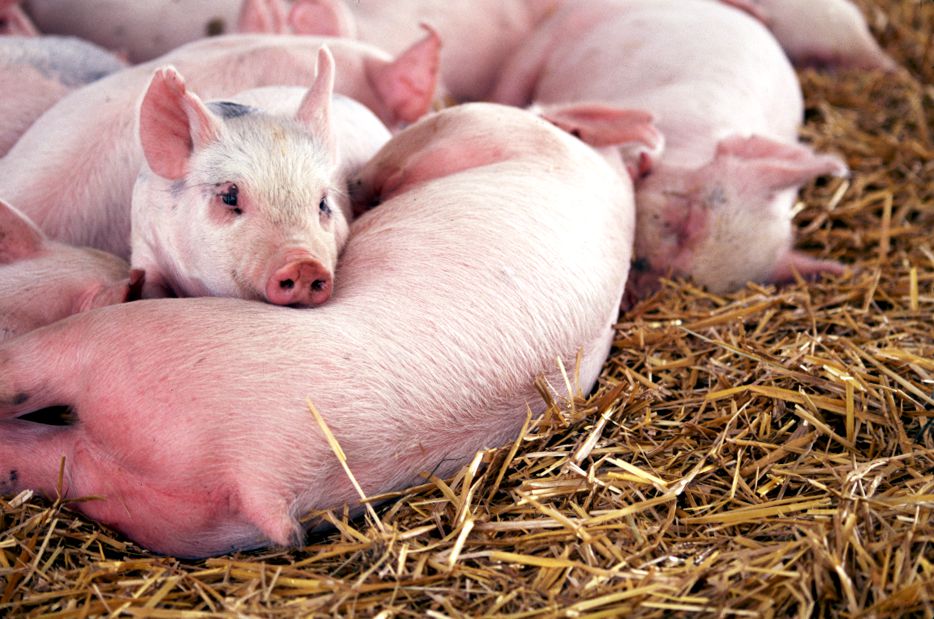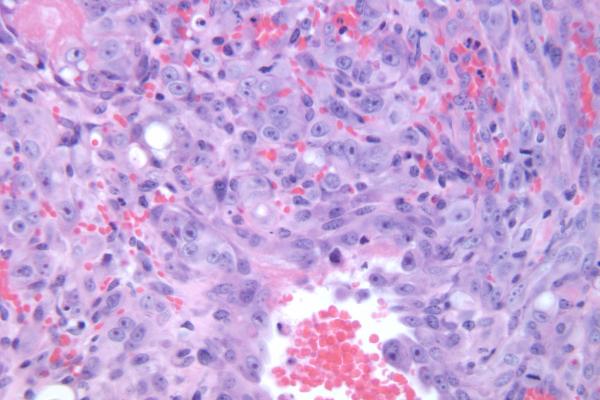Research roundup: U of M scientists find regional outbreak of PRRS caused by previously undiscovered variant
December 20, 2021

Simultaneous outbreaks of porcine reproductive and respiratory syndrome virus (PRRSV) in late 2020 on farms in southern Minnesota and northern Iowa were caused by a previously undiscovered genetic variant of the virus, University of Minnesota researchers discovered.
The suspected emerging variant was 4.5 percent more likely to cause death in finishing pigs within four weeks from detection compared to other variants, the scientists in the Department of Veterinary Population Medicine found. And it spread rapidly through several breeding and growing sites. They released initial findings in an October paper published in Frontiers in Veterinary Science.
PRRS is a serious viral disease affecting only pigs, manifesting in reproductive failure or death in adult and growing pigs due to complications from pneumonia. The disease causes significant economic loss, costing U.S. pork producers over half a billion dollars each year.
RELATED: Research roundup: Can scientists develop a better vaccine against PRRS variants?
The outbreak occurred in two waves, first between October and December of 2020 and again, in larger numbers, beginning in April of 2021. That the outbreak gained steam in the spring raises concern for the next high-transmission season of PRRS—typically in fall and early winter—according to the researchers.
Following numerous reports from regional swine producers and practitioners overseeing infected farms during the first wave, the researchers began collecting farm data and PRRSV-positive samples—and used a combination of whole genome and open reading frame 5 sequencing methodology, as well as other genetic measurements, to arrive at a genetic cluster whose makeup differed from previous strains. They then ran a case-control study of the new variant against other PRRS-positive strains with data collected during the first wave to arrive at their findings.
The scientists identified 190 genetic sequences of samples from 2018 to 2021 across 154 mostly grow-finishing farms that closely matched the new variant—one from 2018, 69 from 2020, 112 from 2021 and eight with no collection data available. Among them, 61 occurred during the first wave and 85 during the second. Seventeen occurred prior to October of 2020. Of the 187 cases for which state-of-origin data was available, 145 came from Minnesota, 40 came from Iowa, one was from Wisconsin, and one came from Illinois. One-hundred-eleven came from within a 75-mile radius.
New variants of PRRS emerge every four to seven years, and this is the first since 2015 to have caused such a significant outbreak. The researchers think the new variant might be more easily spread within production systems because of potentially improved viral properties but that the overall risk factors for PRRSV transmission remain the same. They add that further research is needed to better understand this variant’s emergence, virulence, and transmissibility. For now, though, the researchers have provided the baseline epidemiological description that should serve as an industry alert of an ongoing regional outbreak.

